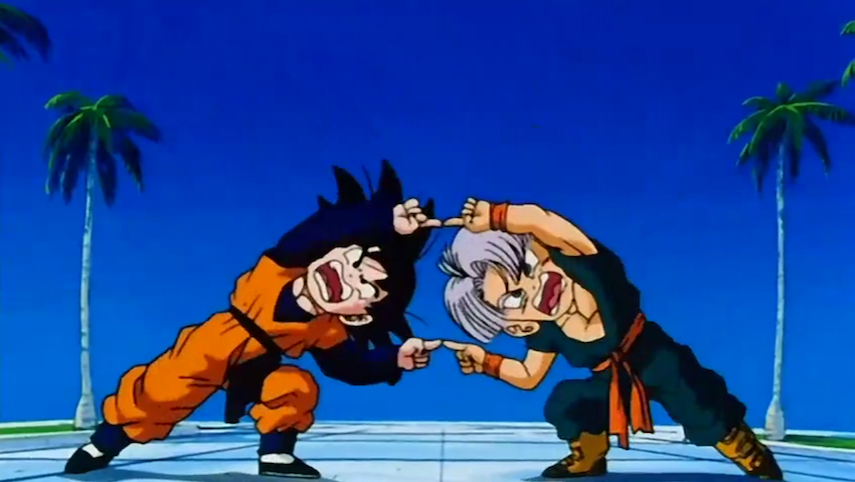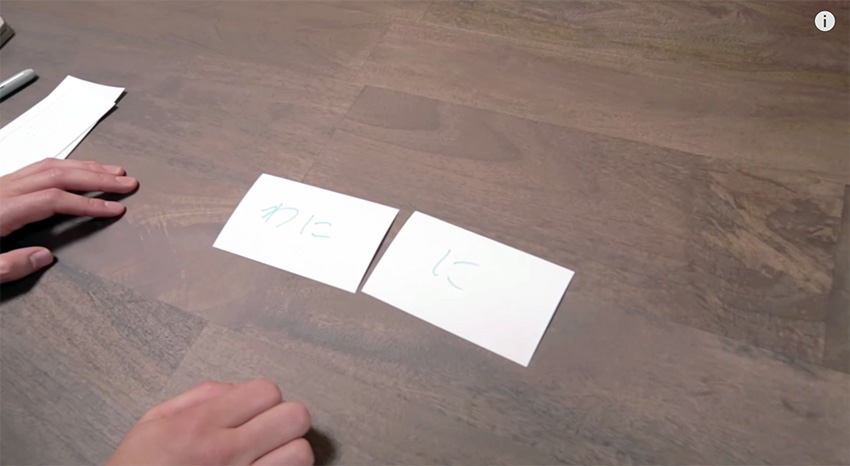In my recent “Japanese Learning Tips With Koichi” video, I talked about an idea I had about fluency and what it really is, other than “talking really good.” You can use this information to speed up your progress towards Japanese fluency. All you need to do is drill a certain way.
Here is that video, though I am going to go into more detail below.
What Is An “Idea?”
When trying to figure out how to become fluent in Japanese, you need to start with ideas.
First let’s learn what an “idea” is. What do you think? Go ahead and give me an answer.
It’s not something that “just happens,” there’s an actual process to it, believe it or not. So where do ideas come from?
Ideas come from making a connection between pieces of knowledge.
That’s it. For how brilliant ideas can be, that’s a very simple definition. You have one piece of knowledge. You have another pieces of knowledge. Maybe you have a few more pieces of knowledge. You connect them and figure out how they relate or could relate. And voila! An idea is born.
Of course, not all ideas come so simply. There are gestation periods too. Once your brain begins the process of connecting two seemingly unrelated pieces of knowledge it will keep going. It may be your subconscious that makes the final “idea” connection, days later. Still, it took connecting those pieces of knowledge to make it happen.
So if you want to come up with some great (and terrible) ideas, do this: Write all your individual pieces of knowledge down on individual notecards. Mix them up. Then start pulling cards. Figure out the connections between them, and eventually you’ll come up with some great ideas. Or at least interesting ones. We sometimes use this strategy to come up with post ideas on Tofugu. AKB48 card? Yakuza card? Hmm, now that’s an interesting article right there (if there happens to be a connection).
Using Connections to Force Fluency

What does this have to do with language learning?
My idea is that making connections between pieces of language knowledge is what makes one fluent. The more connections that you’ve made, the more “ideas” you have about how language works. When you have enough connections in place, you become fluent in a language.
Take for example the topic marking particle は. In the Japanese language, you’re going to need to know the relationship between it and verbs, nouns, adjectives, etc. That’s just the basics, though. You’ll also need to understand its relationship between other particles. How does のは work? How does には work? What is the difference between は and が?
You can spend all day trying to understand the connection between は and everything else in the Japanese language, but that would be boring. My idea is to take notecards and write all your Japanese language knowledge down on them. One card, one piece of knowledge. If you’re a beginner, this should be easy. You won’t have as much knowledge to write down. If you’re intermediate or advanced, well, you have a lot in your head. It might be best to do cards for just the grammar, tenses, particles, and other “more common” things. Then make a bunch of place-holder cards that say “na-adjective,” “i-adjective,” “adverb,” “noun,” “name,” “verb,” (etc). When one of these placeholder cards comes up, you can put in whatever verb, adjective, noun, etc., that you want.
When you’ve finished writing all your knowledge down on cards, it’s time to play.
Draw two cards. Now it’s your job to solve the puzzle. How are they related? How can they be used together? Just as importantly, how can they not be used together and why? Knowing when two things can’t be together is just as important for your fluency as knowing when they can be together.

Sometimes you’ll have to do some research. This is great! It’s teaching you how to find answers to the questions you have. It also gives you new knowledge to write on cards. These grammar dictionaries are going to be indispensable. Each time you pull out cards you can’t figure out off the top of your head, you’ll learn something new. Even if you can figure out a connection between two cards off the top of your head, there’s always something else you don’t know. Treat it like a game or mystery you need to solve and it should be fun.
As you make more and more connections, you’ll start to notice something… you’ll be able to make these connections more quickly and automatically. Patterns will begin to develop and you’ll have solutions to more grammatical problems than before. Even ones you’ve never come across before. As these pile up you’ll be able to speak and understand Japanese in a wider variety of situations. Eventually, as long as you have the vocab to back it up, you’ll hit fluency. There’ll still be some missing pieces to your knowledge, but with enough connections you’ll be able to go with the flow more easily.
I think this is how everyone progresses to fluency, though for some this takes a much longer time compared to others. But, by drilling in this way you’re making yourself progress. You’re giving yourself epiphanies that would have taken much longer to achieve naturally. You’re doing the things that will actually make you fluent.
Creating Knowledge
Of course, none of this will work without the knowledge to connect. If you have nothing there, you have no hope. So, increase your knowledge every day. Learn new vocabulary, grammar, and more, constantly. If you do this and work hard to connect them, you will be fluent in Japanese in (relatively) no time.
